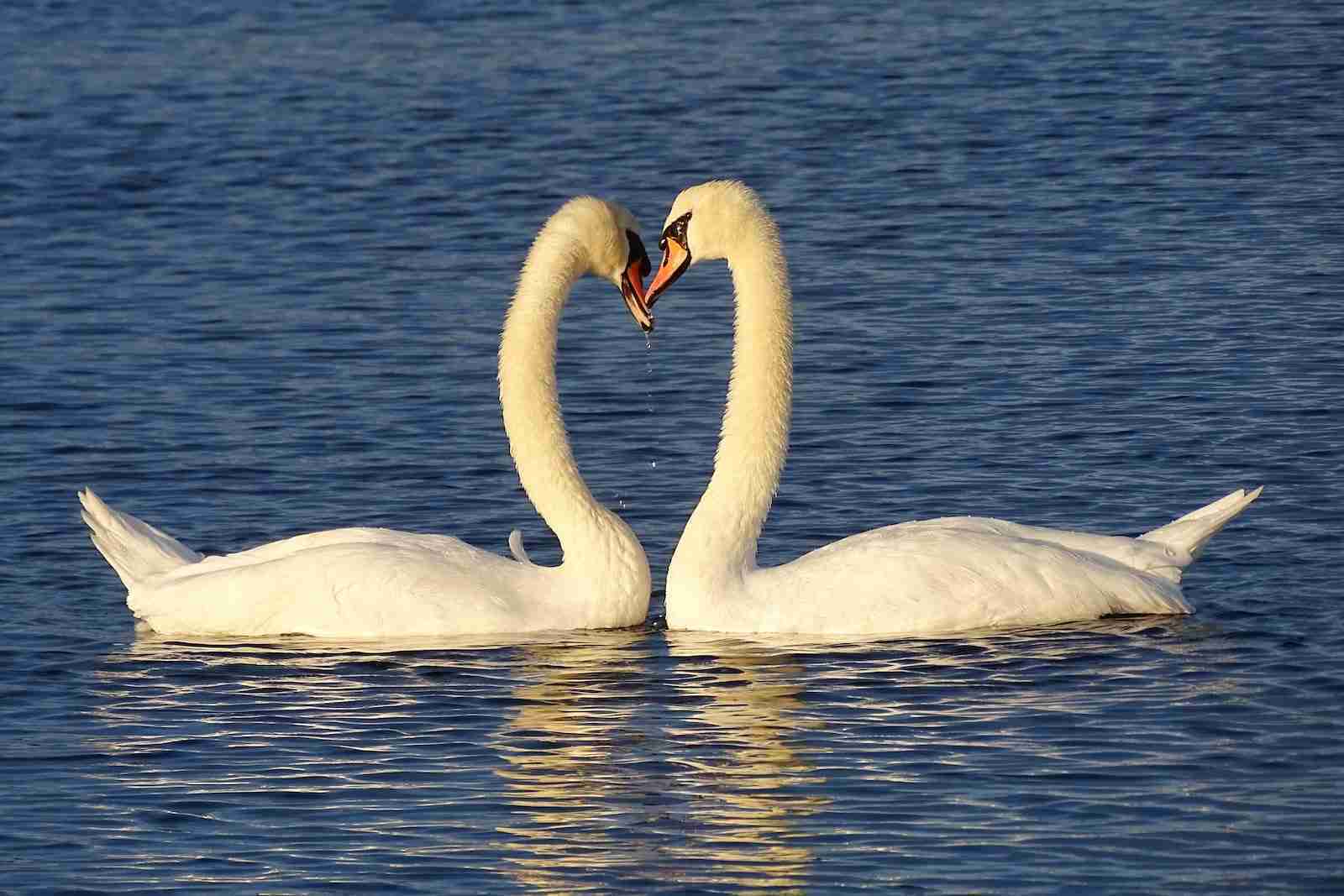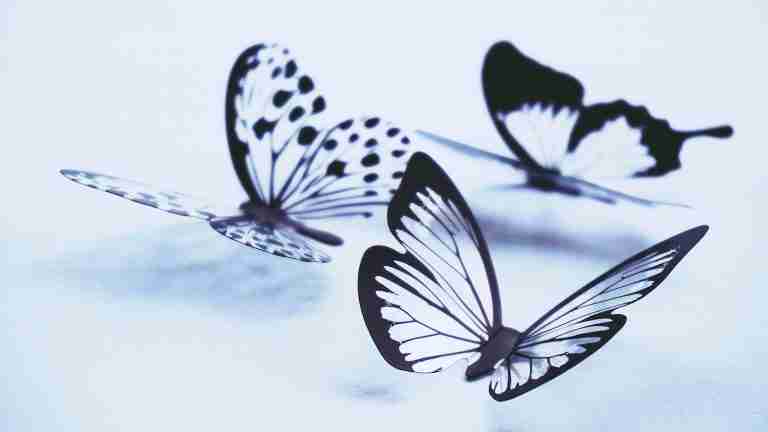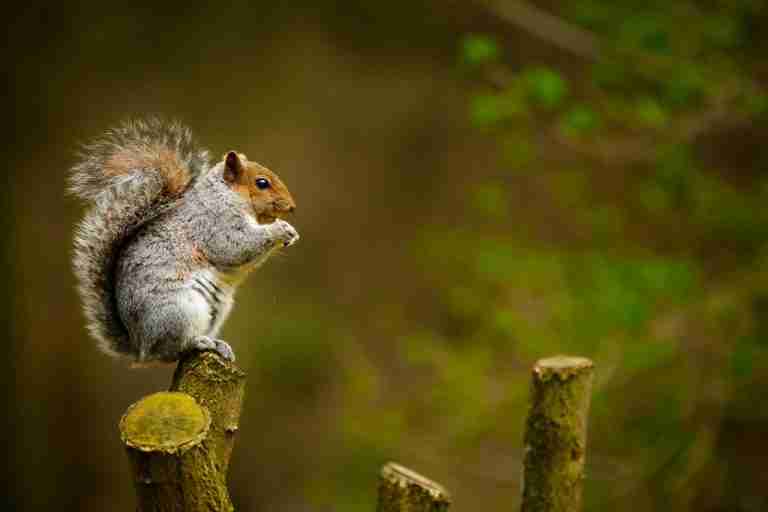25 Fun Facts About Swans That Will Blow Your Mind
1. Swans are known for their graceful movements and beautiful appearance.
Swans are beautiful birds that are known for their smooth and graceful movements. They are like dancers on the water, gliding effortlessly and elegantly.
They are very pretty to look at, and people like to watch them move because they look so smooth and peaceful. It’s like they’re floating on a cloud.
Swans, known for their elegant white plumage, resemble birds in gleaming white gowns. Besides their beauty, they are highly intelligent and exhibit complex social behaviors.
2. The scientific name for a swan is Cygnus.
The name ‘Cygnus‘ for a swan is like a royal title fit for a bird of such grace and beauty. This name originates from ancient Greece, where the word ‘swan’ was known as ‘Cygnus.’
It’s like the swan was so magnificent that the Greeks felt the need to dedicate a whole name just for them.
Centuries later, we still use this regal name to refer to these majestic birds, solidifying their place in history as one of nature’s most elegant creatures.
3. Swans are part of the waterbird family and are closely related to geese and ducks.
Swans are part of the waterbird family, a close-knit group of birds that includes their feathery cousins, geese, and ducks. It’s like they’re all part of the same avian dynasty, sharing the same family tree and aquatic heritage.
They may have different personalities and appearances, but they are all part of the same flock. And, just like any family, they stick together, often forming flocks and swimming, feeding, and raising their young together.
4. Swans are omnivores and feed on plants, small fish, and insects.
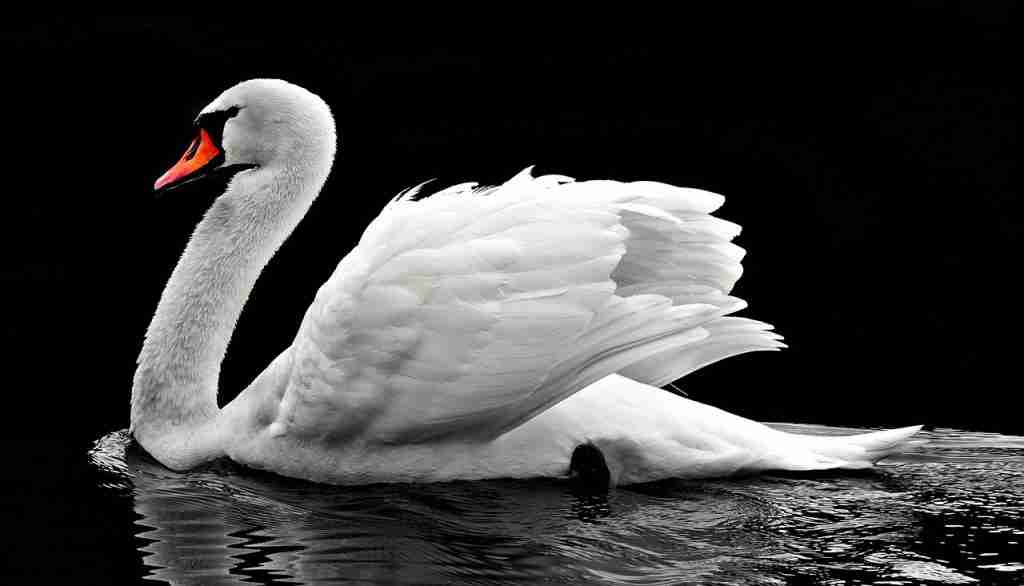
Swans are true foodies with diverse palates encompassing plants, small fish, and insects. They’re like gourmet chefs, carefully selecting ingredients from both land and sea to create a balanced and nutritious meal.
Their menu is never boring, as they feast on various tasty treats, ranging from juicy water plants to succulent insects to delicate fish.
And, with their long necks, they can reach into the depths of the water to snag a delicious snack, making them true culinary connoisseurs of the waterbird world.
5. What is so special about swans?
Swans are special for their beauty, grace, cultural significance, long lifespan, soft feathers, and strong social bonds.
They are symbols of good fortune, love, purity, and grace, inspiring countless works of art and literature.
Their feathers are highly prized for use in clothing and decorative items. Swans captivate people with their elegance and social structure.
6. Swans mate for life and can live up to 20 years in the wild.
Swans are birds that are famous for being in love with each other. When they find their special someone, they stick together forever, just as they get married and are partners for life.
They live a long time, sometimes up to 20 years, so they get to be with each other for a really long time. It’s like you and your best friend were together for 20 years.
They take their love seriously, and it lasts a lifetime.
7. The male swan is called a cob, while the female is called a pen.
The male swan is affectionately known as a cob, while the female swan is charmingly called a pen. They have their unique nicknames, fit for birds because of their status and elegance.
And, just like any good nickname, these monikers are fitting and appropriate, with cob meaning short and stocky and pen meaning woman of the house.
8. Swans are known to make a variety of vocalizations, including honks, whistles, and grunts.
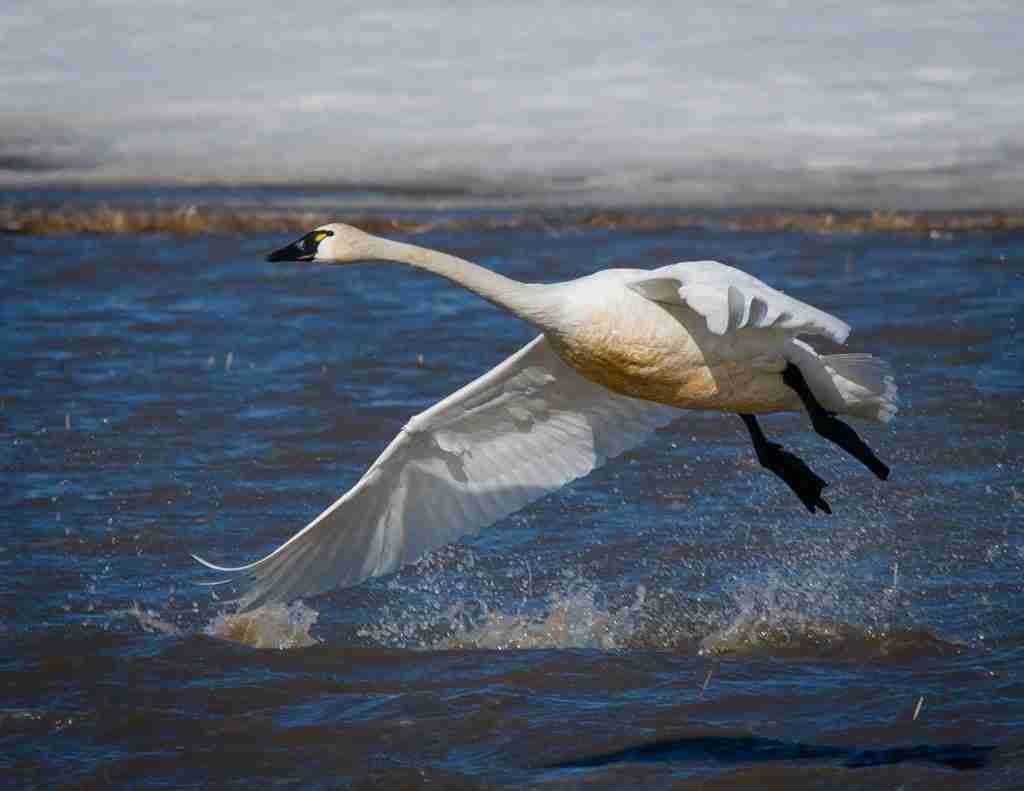
Swans are known for their vocal abilities, producing sounds such as honks, whistles, and grunts. These sounds serve different purposes, such as expressing warning, aggression, or contentment.
Understanding swan vocalizations can help us understand their behavior and social dynamics.
9. Do swans mate for life?
Swans are known to mate for life, creating enduring partnerships that symbolize love and commitment, often perceived as falling in love in human terms. These strong bonds are a key aspect of their nature, with swans typically staying together for life.
If a partner is lost, they seek new mates. While their behavior mirrors our concept of love, it’s primarily driven by instincts crucial for survival and species propagation.
10. Swans can swim underwater to search for food and escape danger.
Swans can swim underwater to find food and escape danger. They have dense plumage and can hold their breath for several minutes.
This allows them to access food and stay underwater for extended periods. Their ability to swim underwater makes them well-equipped to survive in various aquatic habitats.
11. Swans have webbed feet used for swimming and balance on land.
Swans have webbed feet that aid in swimming and balance on land. The webbing provides surface area for propelling the bird through water and helps maintain balance on slippery or unstable surfaces.
This adaptation is essential for swans, who must move efficiently in aquatic and terrestrial environments. The webbed feet are just one of many adaptations that make swans well-suited to their habitat.
12. The swans’ feathers are waterproof, keeping them warm and dry while swimming.
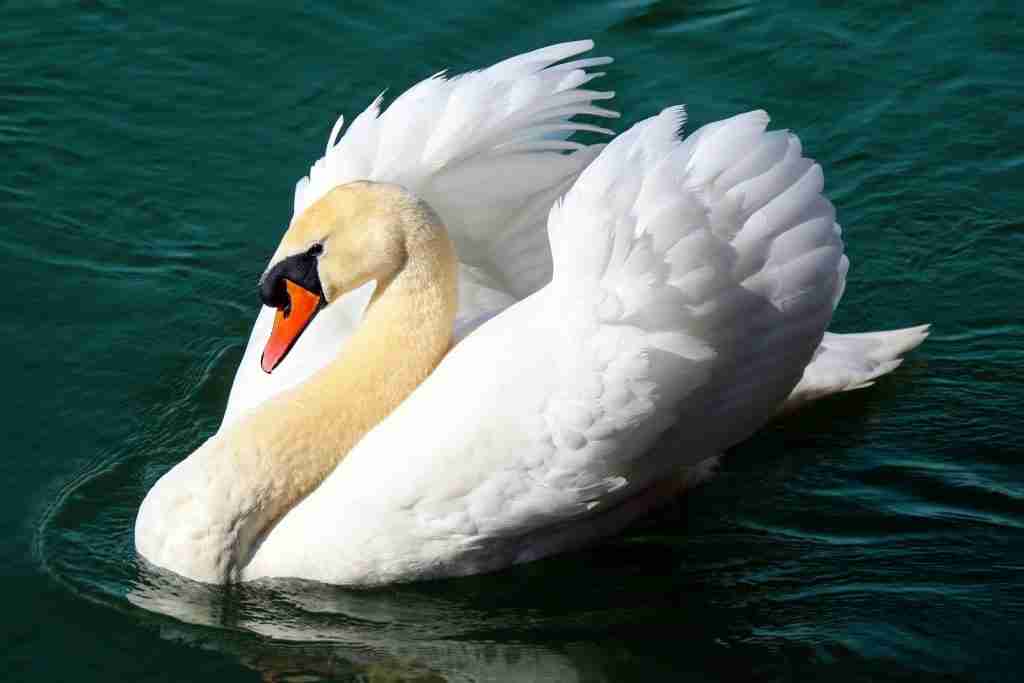
Swans have waterproof feathers that keep them warm and dry while swimming. The feathers also protect the bird from the elements and allow for ease of movement in the water.
They are soft and flexible, giving the swan a streamlined appearance. Waterproof feathers are a crucial adaptation for survival and success in aquatic environments.
13. What is a flock of swans called?
A group of swans is referred to as a “flock.” Other terms that are sometimes used to describe a group of swans include “bank,” “bevy,” “plump,” “Wed,” or “whiteness.”
However, “flock” is the most commonly used term describing a swan group.
14. The symbol of a swan is often associated with love, grace, and beauty.
The swan symbolizes love, grace, and beauty. This reflects its elegant appearance, graceful movements, and strong, lifelong bonds.
The swan often represents these positive art, literature, and folklore qualities. The swan symbol has become an enduring and meaningful symbol across cultures and history.
15. In some cultures, swans are considered to be sacred animals.
Swans are revered in various cultures for their symbolic significance. In Hinduism, they are associated with the goddess Saraswati, who symbolizes wisdom and beauty. Similarly, in Greek mythology, swans are linked to Apollo, representing light and purity. In Celtic traditions, swans are seen as symbols of love, intuition, and transformation.
Indigenous cultures, particularly in North America, regard the swan as a creature of spiritual power and transformation. In Christian iconography, the swan often symbolizes purity and grace.
16. The cygnet is the term used to describe a baby swan.
The term cygnet is used for a baby swan. It is derived from the scientific name Cygnus, which is Greek for swan.
Cygnets are born with a brown and gray downy coat and grow into the white feathers of an adult swan. They are cared for and protected by their parents, who mate for life.
17. The black swan is a species of swan native to Australia.
The black swan is native to Australia and is known for its dark, black plumage. It has a wingspan reaching up to 6 feet and makes musical calls.
They live in wetlands, feeding on plants, insects, and small fish. They play an important role in maintaining the health of Australian wetland habitats.
18. The trumpet swan is the largest native swan species in North America and has a distinctive call.
The trumpet swan is the largest native swan species in North America. It has white plumage and a distinctive call, a deep trumpeting sound.
It lives in wetlands and feeds on plants, small fish, and insects. Once hunted to near extinction, populations have recovered due to conservation efforts.
19. Swans are considered a symbol of good fortune and are often depicted in art and literature.
Swans symbolize good fortune and grace in many cultures. They have been featured in art and literature for their beauty and elegance.
Works such as paintings and books depict swans as symbols of purity, love, and prosperity.
20. Swans have a long lifespan, with some species living up to 30 years in captivity.
Swans have a lifespan of up to 30 years in captivity. Wild swans live 8–15 years on average. Their long lifespans and grace make them cherished globally.
They are symbols of beauty, longevity, and good fortune.
21. The average length of a swan’s neck is typically around 1.5 to 2 feet.
The average length of a swan’s neck is around 1.5 to 2 feet, a remarkable feature that can constitute over half of their total body length. Among the various species, the Trumpeter Swan has the longest neck, extending up to 3 feet in length.
This extraordinary neck length allows swans, especially the Trumpeter, to reach deeper into the water for food, giving them an advantage in different aquatic environments.
22. The feathers of a swan are pure white and are highly sought after for use in clothing and decorative items.
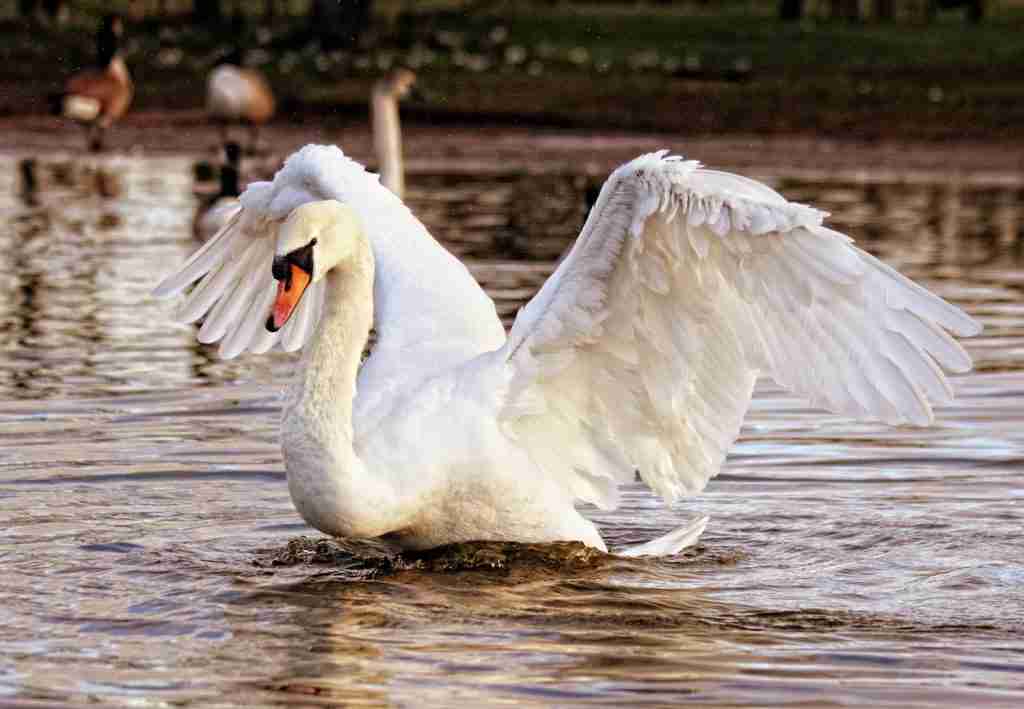
Swan feathers are pure white and in high demand. They have been used in clothing and decorative items for their beauty and softness.
Breeding programs have been established to ensure their survival due to high demand.
23. Swans typically fly at 20 to 30 mph but can reach speeds up to 70 mph.
Swans, renowned for their grace and beauty, are also impressive flyers. On average, they fly at speeds of 20 to 30 miles per hour, but they can reach up to 70 miles per hour with favorable wind conditions.
This high speed is particularly notable during long migratory journeys. The Mute Swan, one of the species, is known for reaching speeds of about 50 miles per hour.
24. The largest species of the swan is the trumpeter swan
The trumpeter swan (Olor buccinator) is the world’s largest species of swan. It is the largest waterfowl in North America, and it is also the world’s largest swan.
This elegant bird lives alongside two other swan species in North America: the tundra (previously known as the whistling swan) and the non-native mute swans.
25. In many countries, including the UK, harming or killing swans is illegal.
Swans are protected in many countries, including the UK, where it’s illegal to harm them. The legal protection reflects their cultural and ecological significance.
The law helps ensure their populations are protected and maintained. This protection is crucial for their survival and well-being.
FAQS
Swans are named after the Old English word swan. The scientific name Cygnus also reflects this and is derived from the Greek word Mykonos, meaning swan. This name reflects the distinctive appearance and behavior of the species and its importance as a recognizable bird.
Swans have good memories and may remember individual humans. Whether a swan remembers a person depends on factors such as frequency of interaction, bird personality, and previous experiences. Swans may approach people they interact positively with, but the degree of memory can vary from bird to bird.
Swans sleep on the water at night for safety. They find a quiet and sheltered spot, tuck their heads under their wings, and drift off to sleep. Swans have waterproof feathers and good swimming ability, making sleeping on the water easy. They stay alert and can quickly respond to any threats.
The “Swan Upping tradition in England and Wales states that the monarch (currently Queen Elizabeth II) owns all unmarked mute swans in open water. Every year, the Queen’s Swan Marker takes a census of the swans. This tradition dates back to the 12th century and symbolizes ownership, not actual control over the birds. The main purpose is to monitor their health and ensure protection.
Swans have been a part of many myths and legends throughout history. In Greek mythology, Zeus seduced Leda as a swan. In Irish mythology, four children were transformed into swans. In Hindu mythology, the Hamsa is a sacred bird symbol of good fortune, often depicted as a swan. In Norse mythology, swans are associated with Odin and believed to be the children of the god.

